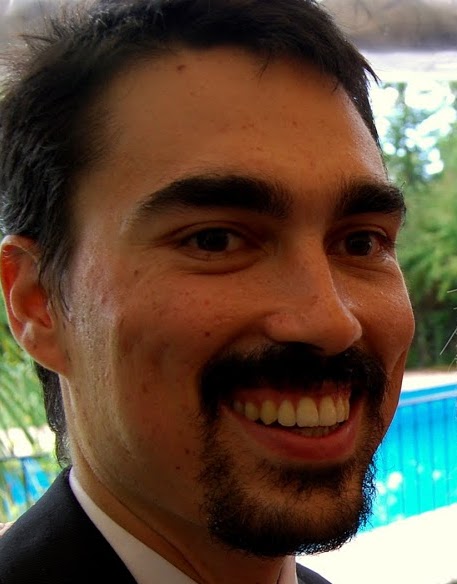Pre-Conj Interview: Julian Gamble


Introduction
The next interview is with Julian Gamble. His talk at Clojure/conj is about core.async and ClojureScript. Read the background to his talk.
Interview
LispCast: How did you get into Clojure?
Julian Gamble: It was about 2007, I was a Java Programmer toying with Rails. I was reading Steve Yegge and his amazing but incendiary blog posts. These had a big theme on languages and expressiveness.
I got curious enough to play with Common Lisp and Racket. I eventually worked through The Little Lisper - and found it hugely inspiring. I also read SICP and Paradigms of Artificial Intelligence Programming and was amazed (coming from Java) at what was possible with functional programming and homoiconicity.
In 2008 I was looking for a way to combine the power of Lisp and my Java background. I had a look at ABCL and Kawa and found they didn't really have much of a community behind them.
Then the Rich Hickey videos started coming out, "Clojure for Java Programmers" etc. Then lots of Java/Lisp people started coming out of the woodwork. I was fascinated by the design choices made and how opinionated the language was. I was delighted by the community that seemed to have come from thin air.
In 2009 Stu Halloway's Programming Clojure book came out and I devoured it. Then I went back and worked through the Little Lisper chapters in Clojure - and found functional programming had a lot more to it than a first-year course for students in the 80s. This meant idiomatic functional programming didn't work like that anymore. (Although the idea of building a Lisp from a few primitives is still very elegant).
In 2011 a Clojure User group started up in Sydney run out of Thoughtworks. This was a fantastic chance to meet up with people who programmed and developed their skills just for the joy of it - rather than just to pay a mortgage.
In 2013 Dave Thomas started running LambdaJam in Australia, and it meant that the functional programming community because more social and more willing to look at each others ideas across languages. It also meant we developed a shared appreciation for the heritage of functional programming. We also developed a deeper appreciation of academic ideas and their linkage back to our practice.
So now in 2014 when Rich Hickey gives a talk on Transducers, and explains that folds are fundamental - I go and read the linked papers from Hutton and Bird. Then I can go and talk about this with my local community of Clojure people. This is something that I wouldn't have done two years ago.
Clojure has been a great ride!
LC: In your talk description, you mention that you will relate core.async to the concurrency semantics we already know. Can you explain this briefly?
JG: The assumption here is that most Clojure people have a Java or C# background. From this background they would have an understanding of how to put process on a thread, similar to how we might use a future in Clojure. Alternatively, Clojure people may have seen how we can pass a function to an agent in Clojure.
Now it is true that core.async go blocks have some very specific queue sleep/wait semantics (CSP) that make it different to other concurrency models. In addition, core.async in JavaScript runs as part of the single-thread model of JavaScript, so it isn't semantically a thread, more of a 'process'.
Given those assumptions, the primitives we find for doing concurrency in core.async are very similar to the concurrency models we have seen in the past in OO languages or in Clojure.
In this talk we'll take a look at an example of taking a well known graphical example in Clojure, port it to ClojureScript and core.async. What we find is that many of the Clojure concurrency paradigms have a natural analogue in ClojureScript and core.async.
LC: Are there any topics to read up on or resources to look at that could help a beginner make the most of your talk?
JG: First thing to look at is David Nolen's 10,000 processes and also this one.
Take a look at the source code and try and understand what it is doing.
Also take a look at Tim Baldridge's 2013 Conj talk at 32:20
Also take a look at the code here: (lines 568-612)
Watch the 1969 version of The Italian Job.
LC: Where can people follow your adventures online?
JG: They can follow me on twitter with @juliansgamble.
Or they can send me an email @ and ask me what I'm up to.
(I've also been known to present at clj-syd on meetup.com - but that is probably only of interest to Sydney readers).
LC: One last question: If Clojure could eat, what would be its favorite food?
JG: Well I'm a huge fan of Dan Friedman's work on The Little Lisper/Schemer - which has frequent food references, such as a peanut butter and jelly sandwich. The book will at random reserve an empty page and state:
THIS SPACE RESERVED FOR JELLY STAINS!
So the answer would have to be PBJ sandwich!
(But for all the British, European, Australian and New Zealand Readers - we all know it as peanut butter and strawberry jam - and some might be puzzled by the combination of these two condiments, but would still appreciate Friedman's book.)
LC: Thanks for a great interview!
This post is one of a series called Pre-conj Prep, which originally was published by email. It's all about getting ready for the upcoming Clojure/conj, organized by Cognitect. Conferences are ongoing conversations and explorations. Speakers discuss trends, best practices, and the future by drawing on the rich context built up in past conferences and other media.
That rich context is what Pre-conj Prep is about. I want to enhance everyone's experience at the conj by surfacing that context. With just a little homework, we can be better prepared to understand and enjoy the talks and the hallway conversations, as well as the beautiful venue and city of Washington, DC.
Clojure/conj is a conference organized and hosted by Cognitect. This information is in no way official. It is not sponsored by nor affiliated with Clojure/conj or Cognitect. It is simply me curating and organizing public information about the conference.


